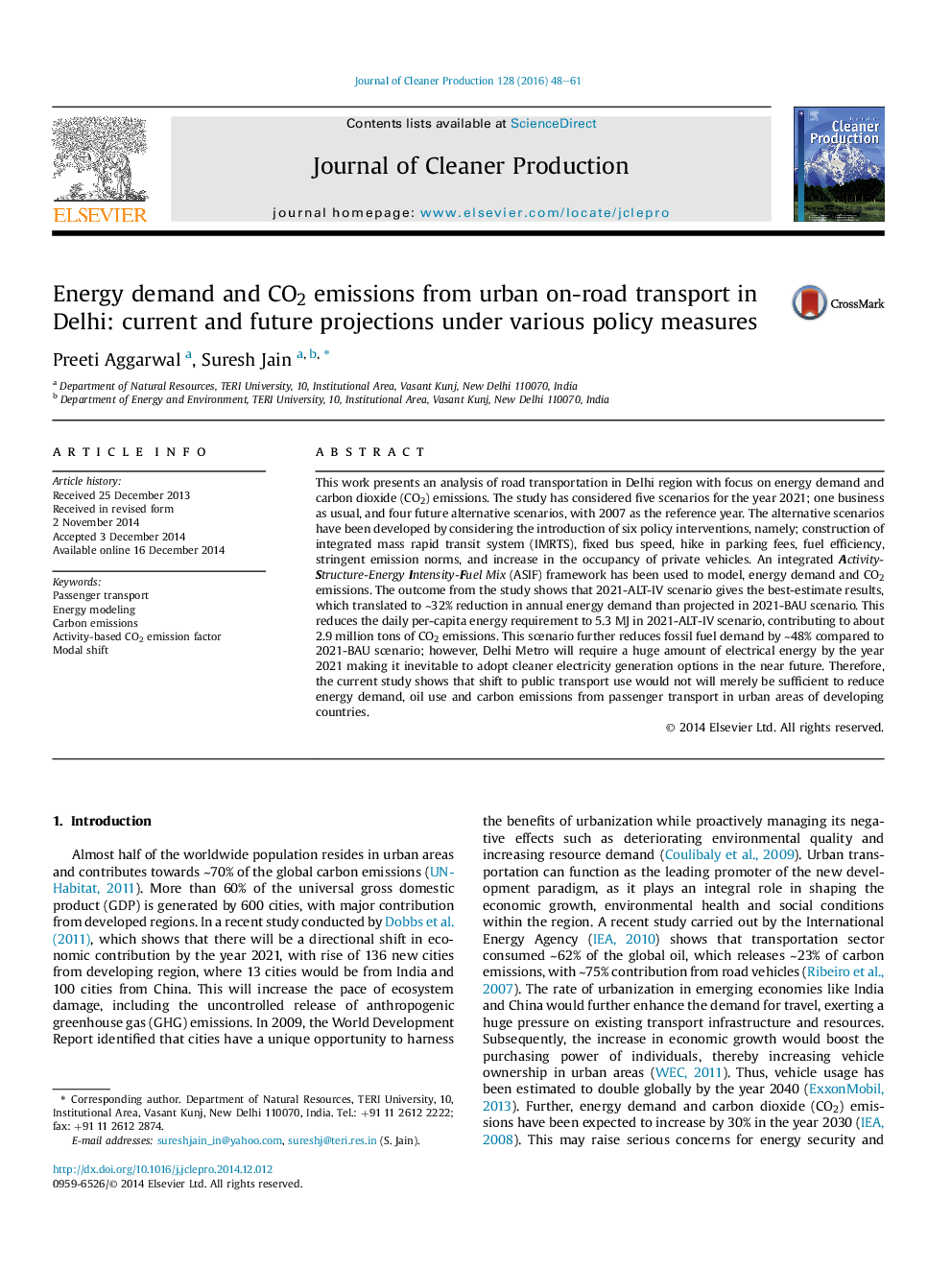| کد مقاله | کد نشریه | سال انتشار | مقاله انگلیسی | نسخه تمام متن |
|---|---|---|---|---|
| 1744130 | 1522121 | 2016 | 14 صفحه PDF | دانلود رایگان |
• Energy and CO2 emissions from passenger transport in Delhi for the year 2007 and 2021.
• The measurement of CO2 emissions using activity based emission factors in India.
• Energy demand decreases from 11 to 32% under various (2021-ALT-I to IV) scenarios.
• The CO2 emissions reduces by ~30% under 2021-ALT-IV scenario.
This work presents an analysis of road transportation in Delhi region with focus on energy demand and carbon dioxide (CO2) emissions. The study has considered five scenarios for the year 2021; one business as usual, and four future alternative scenarios, with 2007 as the reference year. The alternative scenarios have been developed by considering the introduction of six policy interventions, namely; construction of integrated mass rapid transit system (IMRTS), fixed bus speed, hike in parking fees, fuel efficiency, stringent emission norms, and increase in the occupancy of private vehicles. An integrated Activity-Structure-EnergyIntensity-Fuel Mix (ASIF) framework has been used to model, energy demand and CO2 emissions. The outcome from the study shows that 2021-ALT-IV scenario gives the best-estimate results, which translated to ∼32% reduction in annual energy demand than projected in 2021-BAU scenario. This reduces the daily per-capita energy requirement to 5.3 MJ in 2021-ALT-IV scenario, contributing to about 2.9 million tons of CO2 emissions. This scenario further reduces fossil fuel demand by ∼48% compared to 2021-BAU scenario; however, Delhi Metro will require a huge amount of electrical energy by the year 2021 making it inevitable to adopt cleaner electricity generation options in the near future. Therefore, the current study shows that shift to public transport use would not will merely be sufficient to reduce energy demand, oil use and carbon emissions from passenger transport in urban areas of developing countries.
Journal: Journal of Cleaner Production - Volume 128, 1 August 2016, Pages 48–61
